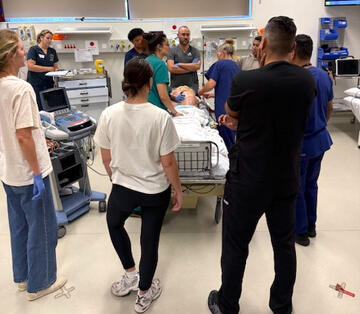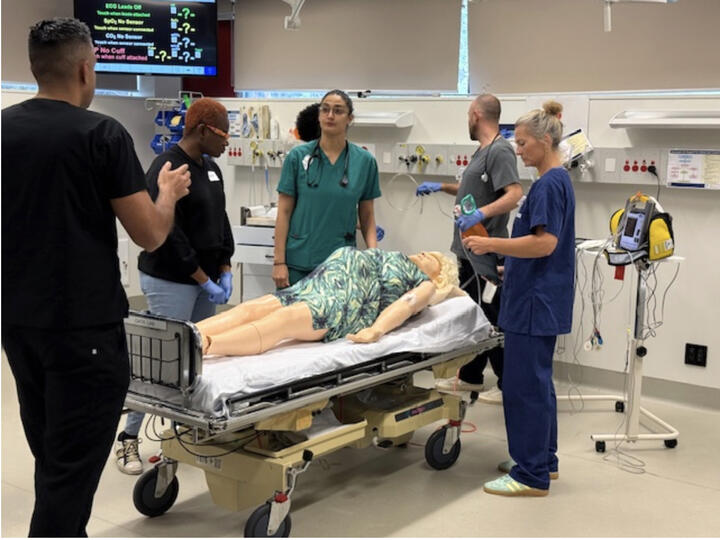Practice makes perfect in most parts of life – and Emergency Care (EC) in hospitals is no exception.
Visitors to Emergency Departments across Australia present a wide range of ailments, day and night, requiring instant analysis and treatment from the staff on duty.
So how do they prepare for the constant arrival of life-threatening conditions – heart attacks, strokes, horrific injuries and more?
The EC team at Sydney Adventist Hospital, the largest private facility in New South Wales, conducts special training sessions involving complex simulations three times a year.
"These sessions are so valuable for our staff for training and discussing different techniques and the latest approaches to situations, so that they're always finely honed and ready for whatever life throws at them," said Dr Guru Nagaraj, its Director of Emergency Services.
For example, a pregnant woman comes to the hospital – also known as the San – for a 36-week check-up and has an accident, injuring herself falling down a set of stairs.
She is taken to Emergency Care, moaning in pain and expressing concern for her unborn baby.
Doctors, nurses and team leaders all play a role assessing the patient, discussing developments and checking in on her symptoms.
It encourages team bonding too – bringing together practitioners from different fields.
Blood samples are taken, x-rays simulated, and medications provided. Phone calls are also made to pathology, radiology and specialists – in this case an obstetrician – all working on the same hypothetical scenario.
Every action is happening just as it would in the real EC.

The training exercise requires real-time decision-making from the EC team
Only the organisers of this event can press pause and take a time-out every now and then to discuss the reasoning behind various steps taken so far and what actions are needed next.
Roles can also be swapped to give people different perspectives of the same experience. But throughout it all, the patient's wailing is distressingly realistic, maintaining pressure on all those present.
"It takes quite a long time to plan one of these scenarios and replicate and co-ordinate all the various components of our EC working experience," Dr Nagaraj said.
The planning behind this simulated event is almost as complex as the mannequin's medical issues – the plastic life-size patient even has a replica baby in her belly, which the team "delivers" during an emergency caesarean section.
The San's Director of Emergency Medicine Training, Catherine MacManus, maps out every detail of the exercise, thinking through potential outcomes and learning opportunities.
With the help of nurse educators, she organises props to give the setting the most realistic experience possible.
In this training exercise, the patient and her baby were taken to maternity for recovery and celebration of a wonderful outcome – a safe delivery.
"We're lucky to have the Simulation Centre here to use, and all of the realistic props to make that experience as life-like as possible," Dr Nagaraj said.
"Our team really enjoys the training opportunity. It's very special."
Read more: 'Fair deal' shows way for private healthcare
Read more: Seven in a row – San centre tops NSW patient survey
Next Safety And Quality:
24/7/2025 New centre to offer 'real hope' for cancer patients
Previous Safety And Quality:
10/6/2025 Patients' chance to join global blood cancer trial
![[APHA]](/images/logo_apha.svg)
